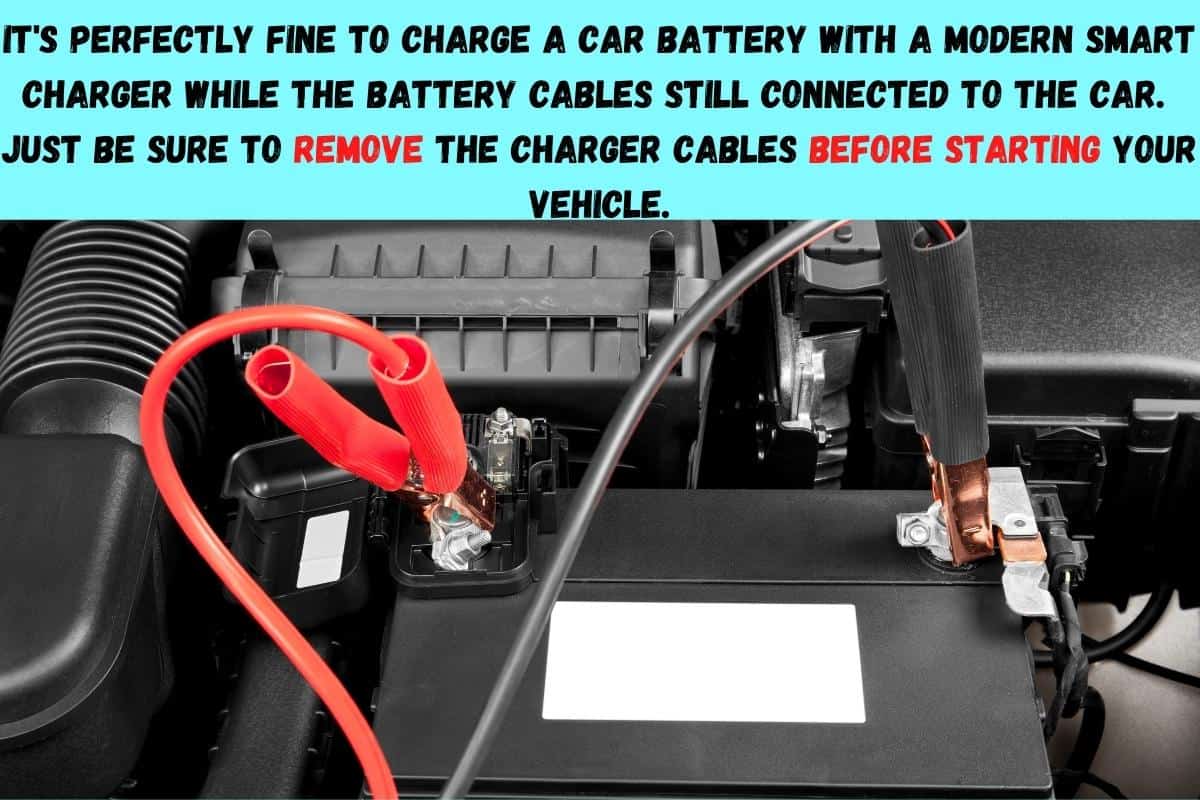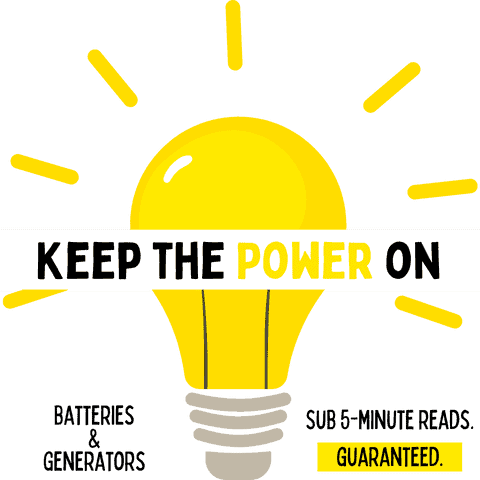Sometimes charging a car battery is not as simple as attaching the charging cables and walking away. Nuances of the process still exist, like do I need to disconnect the car battery before charging it? Can I start my car’s engine with the charger still attached? Can I use a trickle charger while the car battery is still hooked up?
This will be a quick read to give you the basics of what you need to know for these questions.
Do I Need to Disconnect a Car Battery to Charge it?
When using modern smart chargers which have microprocessors and conduct real-time diagnostics, it is not necessary to disconnect a car’s 12-volt starter battery before charging.
These modern chargers come in all shapes and sizes and generally say “smart charger”, “3-stage”, “4-stage”, etc. You would be hard-pressed to find any charger on the market that would not fall into the smart charger category.
Smart chargers monitor the health, state of charge, and ability of a battery to accept a charge on a second-by-second basis. They are equipped with anti-spark and reverse polarity protection as well so that you won’t get that visible spark when connecting that last charging lead, and you won’t damage a battery if you connect the leads up to the wrong terminals.

These smart chargers are perfectly safe to connect to your car’s starting battery while the battery itself is still connected to your car’s electronics.
It is recommended to disconnect a car battery before charging if your charger is an obsolete charger that does not have “smart” technology.
Can I Start My Car with a Charger or Trickle Charger Connected?
We all know that we can start a car battery when jumper cables are connected from another vehicle, but what about starting a car when a charger is connected?
A car charger should be disconnected from a car’s 12-volt starter battery before attempting to start the engine. Since a battery charger’s amps (without a “jump” feature) are negligible in assisting a car’s engine start and the potential for damaging the charger exists if the battery is not strong enough to start the engine without it, the risk outweighs the reward.
The first thing to realize is that a battery charger for a car battery has nowhere near the amps needed to start a car. If your vehicle requires a battery with 700 cold cranking amps, then thinking that your 5-amp charger is going to do anything for turning over your engine and powering all of your car’s electronics, pumps, sensors, etc. is fooling yourself.
The second thing to consider is what could happen to your charger if it is in the process of charging a battery that is not charged enough to turn over the engine. When you turn the key, there is definitely the potential to try to draw too much out of the charger itself which will likely blow a fuse or burn up an internal component that may not be easily replaceable.
A car can be started with the charger connected if the car’s battery already has enough amperage to start the engine without any assistance from the charger (as little as it would be). Regardless, the risk of damaging the charger is always present — especially if the battery is on the weak end of the spectrum when the engine is trying to turn over.
The exception to disconnecting the charger before starting the car’s engine would be if you’re using a charger that has a “jump/boost” feature, or a portable jump starter (without charging capabilities). You can see an example of portable “jump” start device here on Amazon.
These are certainly intended to be hooked up to your car’s battery terminals and left there as you turn the engine on.
Can I Trickle Charge a Car Battery While It’s Still Connected?
Nearly every trickle charger on the market today is controlled by “smart” technology. Essentially, that means that trickle chargers are highly computerized (despite the low output) with a microprocessor and these are perfectly safe to use on a vehicle’s car battery while it is still connected.
